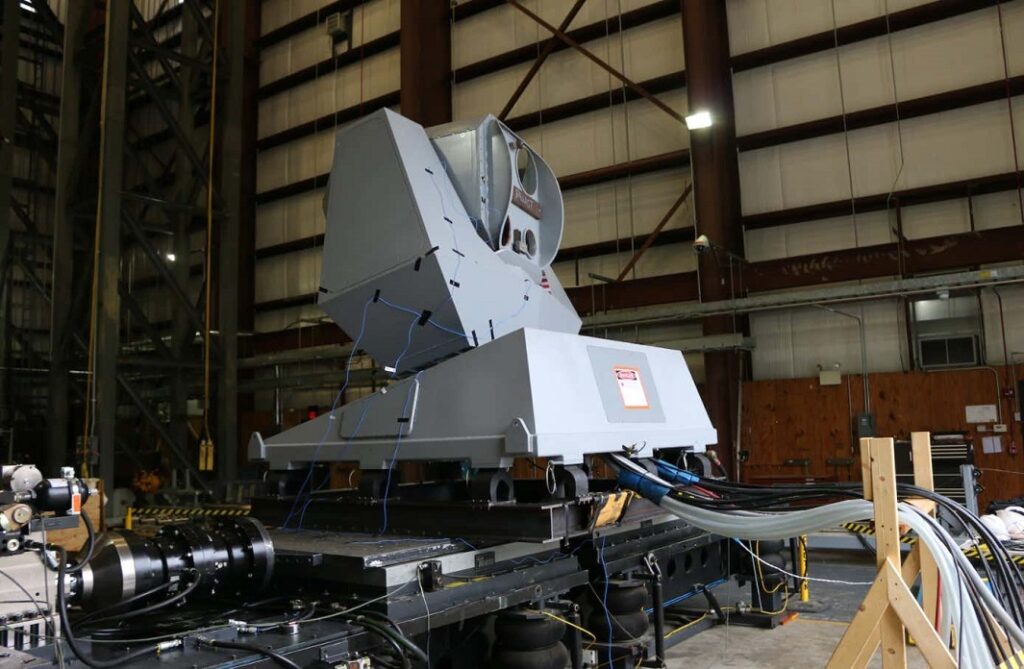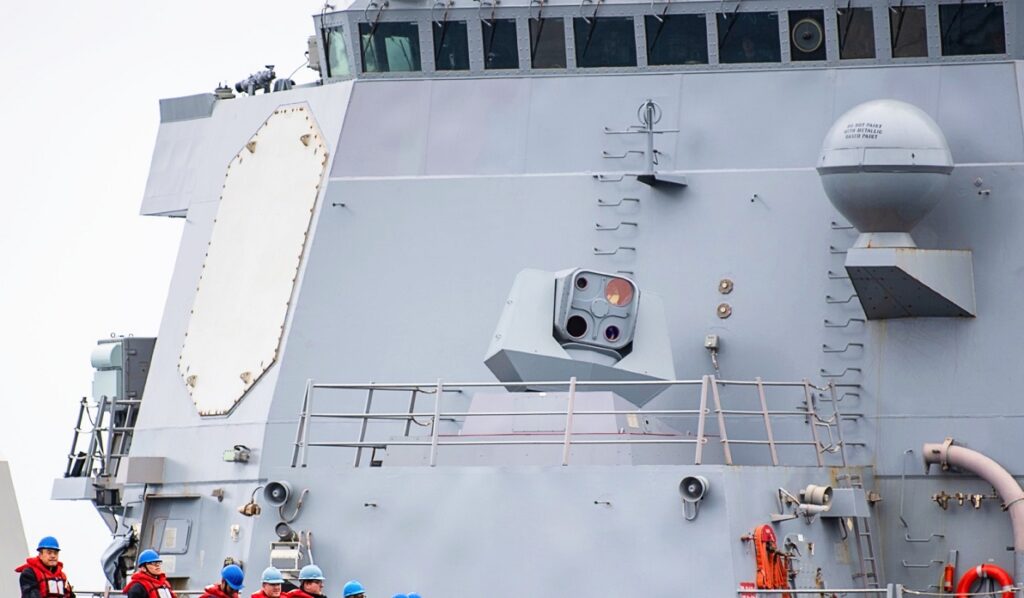The U.S. Navy released a photo of the USS Stockdale fitted with the new Optical Dazzling Interdictor, or ODIN, while conducting a replenishment at sea with USS Carl Winson (CVN-70) from its official Twitter account.
ODIN is one of the primarily directed energy weapons of the U.S. Navy. According to the images and congress reports, the dazzler may be approaching largely operational status.
The system’s development, testing and production were done by the U.S. Navy subject matter experts at Naval Surface Warfare Center (NSWC) Dahlgren Division in support of Program Executive Office Integrated Warfare Systems. Their work on the laser weapon system known as LaWS, positioned them to be designated as the design and production agent for ODIN.
The U.S. Navy’s FY2021 budget submission states that Optical Dazzling Interceptor, Navy effort provides near-term, directed energy, shipboard Counter-Intelligence, Surveillance, and Reconnaissance (C-ISR) capabilities to dazzle Unmanned Aerial Systems (UASs) and other platforms that address urgent operational needs of the Fleet. FY 2018 was the first year of funding, which supports the design, development, procurement and installation of the system standalone units over the Future Years Defense Plan, for deployment on Arleigh Burke Flight II class destroyers.

The ODIN was firstly shown in a blog entry showed a photograph of the Navy destroyer Dewey (DDG-105) with an apparent laser turret installed in front of its deckhouse on November 9, 2019. The blog entry speculated that the installation is most likely an ODIN installation. 25 A July 7, 2020, press article that reported remarks made by a Navy official stated that the system on Dewey is an ODIN
installation.
ODIN is the future weapon against drone swarms
ODIN is one facet of the larger Navy Laser Family of Systems (NLFoS) which includes the High Energy Laser with Integrated Optical-Dazzler System (HELIOS) and the High Energy Laser Counter-ASCM Program (HELCAP).
ODIN is considered as the first step in a number of increasingly capable and lethal laser systems that will be fielded over the decade. It is a candidate to be a remedy against SWARM attacks consist of UAVs or USVs. Drone swarm is the main threat to the U.S. Navy in the Persian Gulf Region because the Iranian Navy has hundreds of armed drones that pose a threat against the U.S. assets operating in the region.

Though the ODIN will have some of the same limitations all lasers have: rain, smog and smoke could limit its effectiveness, it has turned out to be a cost-effective weapon. Devoting power to a laser is less expensive than destroying an aerial threat such as a drone. Besides, the system would be produced relatively cheaper comparing to the other sophisticated weapon systems.
According to the U.S. Navy officials, within the next couple of years, the ODIN program will have all [ODIN] units operating within the fleet providing a safer and more technically advanced capability to the US Navy.
Check out Naval Library App to find out the specifications of laser weapon systems.





 : MCSN Sophia SImmons & MCSN Elisha Smith
: MCSN Sophia SImmons & MCSN Elisha Smith 













Comments